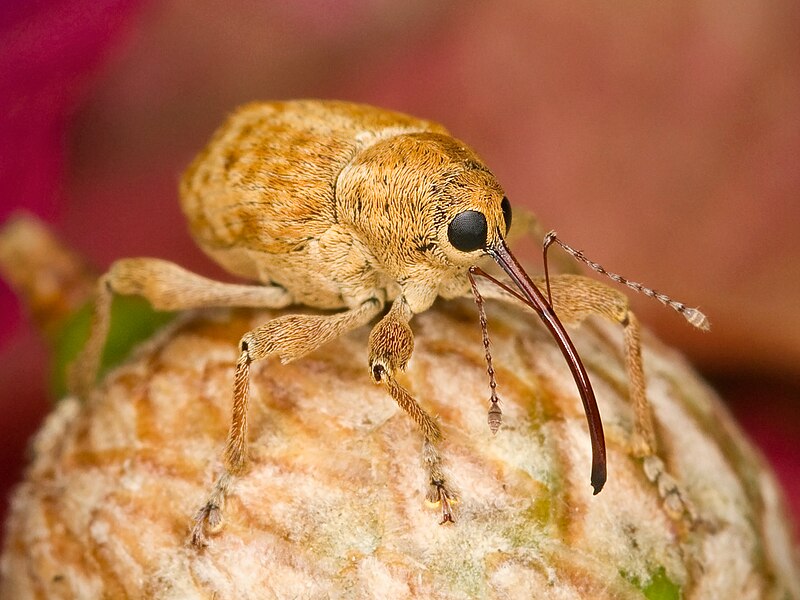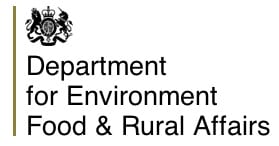PREDICTS Project: Land-Use Change Doesn’t Impact All Biodiversity Equally
By Claire Asher, on 13 October 2014
Humans are destroying, degrading and depleting our tropical forests at an alarming rate. Every minute, an area of Amazonian rainforest equivalent to 50 football pitches is cleared of its trees, vegetation and wildlife. Across the globe, tropical and sub-tropical forests are being cut down to make way for expanding towns and cities, for agricultural land and pasture and to obtain precious fossil fuels. Even where forests remain standing, hunting and poaching are stripping them of their fauna, degrading the forest in the process. Habitat loss and degradation are the greatest threats to the World’s biodiversity. New research from the PREDICTS project investigates the patterns of species’ responses to changing land-use in tropical and sub-tropical forests worldwide. In the most comprehensive analysis of the responses of individual species to anthropogenic pressures to date, the PREDICTS team reveal strong effects of human disturbance on the geographical distribution and abundance of species. Although some species thrive in human-altered habitats, species that rely on a specific habitat or diet, and that tend to have small geographical ranges, are particularly vulnerable to habitat disturbance. Understanding the intricacies of how different species respond to different types of human land-use is crucial if we are to implement conservation policies and initiatives that will enable us to live more harmoniously with wildlife.
Habitat loss and degradation causes immediate species losses, but also alters the structure of ecological communities, potentially destabilising ecosystems and causing further knock-on extinctions down the line. As ecosystems start to fall apart, the valuable ecosystem services we rely on may also dry up. There is now ample evidence that altering habitats, particularly degrading primary rainforest, has disastrous consequences for many species, however not all species respond equally to land-use change. The functional traits of species, such as body size, generation time, mobility, diet and habitat specificity can have a profound impact on how well a species copes with human activities. The traits that make species particularly vulnerable to human encroachment (slow reproduction, large body size, small geographical range, highly specific dietary and habitat requirements) are not evenly distributed geographically. Species possessing these traits are more common in tropical and sub-tropical forests, areas that are under the greatest threat from human habitat destruction and loss of vegetation over the coming decades. The challenge in recent years, therefore, has been developing statistical models that allow us to investigate this relationship more precisely, and collecting sufficient data to test hypotheses.There are three key ways we might chose to investigate how species respond to land-use change. Many studies have investigated species-area relationships, which model the occurrence or abundance of species in relation to the size of available habitat. These studies have revealed important insights into the damage caused by habitat fragmentation, however they rarely consider how different species respond differently. Another common approach uses species distribution models to predict the loss of species in relation to habitat and climate suitability. These models can be extremely powerful, but require large and detailed datasets that are not available for many species, particularly understudied creatures such as invertebrates. The PREDICTS team therefore opted for a third option to investigate human impacts on species. The PREDICTS project has collated data from over 500 studies investigating the response of individual species to land-use change, and their database now includes over 2 million records for 34,000 species. Using this extensive dataset, the authors were able to model the relationship between land-use type and both the occurrence and abundance of species. One of the huge benefits of this approach is that their dataset enabled them to investigate these relationships in a wide range of different taxa, including birds, mammals, reptiles, amphibians and the often neglected invertebrates.
Modelling Biodiversity
In general human-dominated habitats, such as urban and cropland environments, tended to harbour fewer species than more natural, pristine habitats. Community abundance in disturbed habitats was between 8% and 62% of the abundance found in primary forest, and urban environments were consistently the worst for overall species richness. In these environments, human population density and a lack of forest cover were key factors reducing the number of species. Human population density could impact species directly through hunting, or more indirectly through expanding infrastructure. However, these factors impact different species in different ways, so the authors next investigated different taxa separately.
Birds appear to be particularly poor at living in urban environments, most likely because they respond poorly to increases in human population. Forest specialists and narrow-ranged birds fare especially badly in urban environments; only 10% of forest specialists found in primary forest are able to survive in urban environments. Although the effect was less extreme, mammals were also less likely to occur in secondary forest and forest plantations than primary forest, and forest specialists were particularly badly affected.
Urban Pests
Although many species were unable to exist in disturbed habitats, those species that persisted were often more abundant in human-modified habitats than pristine environments. This isn’t particularly surprising – some species happen to possess characteristics that make them well suited to urban and disturbed landscapes; these are often the species that we eventually start to consider a pest because they are so successful at living alongside us (think pigeons, rats, foxes). These species tend to be wide-ranging generalists, although sometimes habitat specialists do well in human-altered habitats if we happen to alter the habitat in just the right. Pigeons, for example, are adapted to nesting on cliffs, which our skyscrapers and buildings inadvertently mimic extremely well. The apparent success of some species in more open habitats such as cropland and urban environments might also be partly caused by increased visibility – it’s far easier to see a bird or reptile in an urban environment than dense primary forest! This doesn’t explain the entire pattern, however, and clearly some species are simply more successful in human-altered habitats. They are in the minority, though.
Do Reptiles Prefer Altered Habitats?
One interesting finding was that for herptiles (reptiles and amphibians), more species were found in habitats with a higher human population density. This rather unexpected relationship might reflect a general preference in herptiles for more open habitats. Consistent with this, the authors found fewer species in pristine forest than secondary forest. However, upon closer inspection the authors found that herptiles do not all respond in the same way. Reptiles showed a U-shaped relationship with human population density – the occurrence of species was highest when there were either lots of people or no people at all. By contrast, amphibians showed a straight relationship, with increases in human population density being mirrored by increases in the number of species present. This highlights the importance of investigating fine-scale differences between species in their responses to human activities.
This study is the first step in more detailed, comprehensive analyses of the responses of species to human activities. The power of this study comes not only from it’s large dataset and broad spectrum of taxonomic groups, but also from it’s ability to directly couple land-use changes with species’ traits such as range-size and habitat specialism. The authors say that the next major step would be to incorporate interactions between species in these models – the community structure of an ecosystem can have profound effects on the species living in it, and changes in the abundance of any individual species does not happen in isolation from the rest of the community.
Check out the PREDICTS Project for more information!
Original Article:


This research was made possible by funding from the Natural Environment Research Council (NERC), and the Biotechnology and Biological Sciences Research Council (BBSRC).
 Close
Close





 The UK is one of the most altered ecosystems in the World, and its land is dominated by agriculture. Nearly 75% of UK soil (that’s 18.4 million hectares!) is agricultural. Decisions about how to use our land have traditionally used a one-size-fits-all, market-driven approach, but recent research in UCL’s
The UK is one of the most altered ecosystems in the World, and its land is dominated by agriculture. Nearly 75% of UK soil (that’s 18.4 million hectares!) is agricultural. Decisions about how to use our land have traditionally used a one-size-fits-all, market-driven approach, but recent research in UCL’s  However, the pattern of gains and losses in the monetary value of land varied across the country, with weaker environmental regulation favoured in north west Britain. They therefore also considered models which allowed policy to vary across the UK. Selecting a policy scenario for each area based on both market value and ecosystem services yielded net benefits of 20% across the UK, with much larger gains in highly populated areas. Converting relatively small areas of land towards recreation and green-space was of extremely high value in urban areas, at a relatively small cost to agriculture.
However, the pattern of gains and losses in the monetary value of land varied across the country, with weaker environmental regulation favoured in north west Britain. They therefore also considered models which allowed policy to vary across the UK. Selecting a policy scenario for each area based on both market value and ecosystem services yielded net benefits of 20% across the UK, with much larger gains in highly populated areas. Converting relatively small areas of land towards recreation and green-space was of extremely high value in urban areas, at a relatively small cost to agriculture. 



